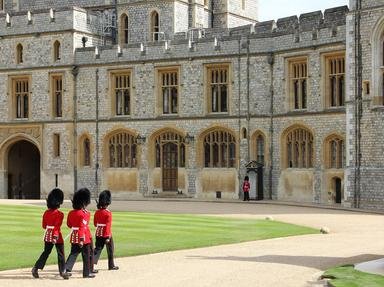Quiz Answer Key and Fun Facts
1. Although the idea of the coronation goes back much further, the first such ceremony of which significant detail is known is that of King Edgar in 973. In which city did it take place?
2. The Coronation Stone is an ancient stone block believed to be the site of the coronation of a number of Anglo-Saxon kings. In which London borough is it located?
3. Traditionally, it is the Archbishop of Canterbury who crowns the monarch, but this has not always occurred. William III and Mary II were the last monarchs not to be crowned by the Archbishop of Canterbury - which senior cleric instead undertook the task?
4. Although many coronation anthems have been written, "Zadok the Priest" is the one that has become synonymous with the ceremony. Which composer originally wrote it?
5. The Coronation Riots were a series of riots that broke out in protest against the coronation of which monarch?
6. The Cullinan is the name given to a 3,100 carat diamond that was subsequently cut into nine separate numbered stones. In which element of the UK's coronation regalia is the largest of these numbered stones incorporated?
7. Edward Elgar's "Coronation Ode" was written as part of the planned celebrations of Edward VII's coronation in 1902, but its premiere was delayed following the postponing of the coronation owing to the King having surgery for appendicitis. In which city was it eventually premiered?
8. St Edward's Crown is the one that is traditionally used to actually crown the British monarch, but this tradition is a fairly recent one, with George V the first in two centuries to be crowned with it. Who was the previous monarch to be crowned with it at their coronation, two centuries earlier?
9. In addition to the coronation, the British monarch also had a major ceremony, the Imperial Durbar, proclaiming their accession to the imperial throne of India. Who was the only monarch to attend an Imperial Durbar?
10. At the time of the coronation of King Charles III, the United Kingdom was the only European monarchy where a new sovereign had a coronation ceremony. Of the remaining European monarchies, which was the last that had a full coronation for its new monarch?
Source: Author
Red_John
This quiz was reviewed by FunTrivia editor
ponycargirl before going online.
Any errors found in FunTrivia content are routinely corrected through our feedback system.
